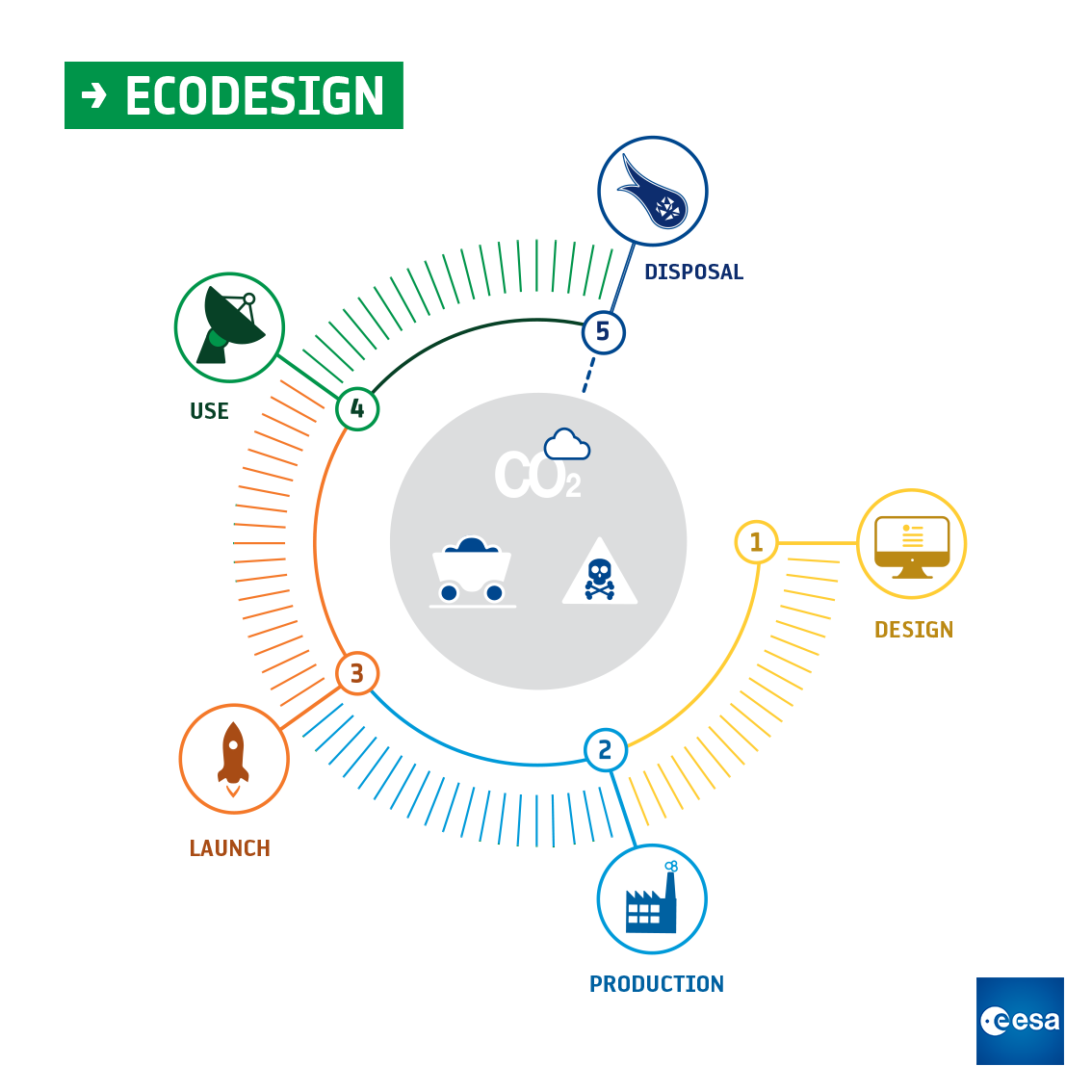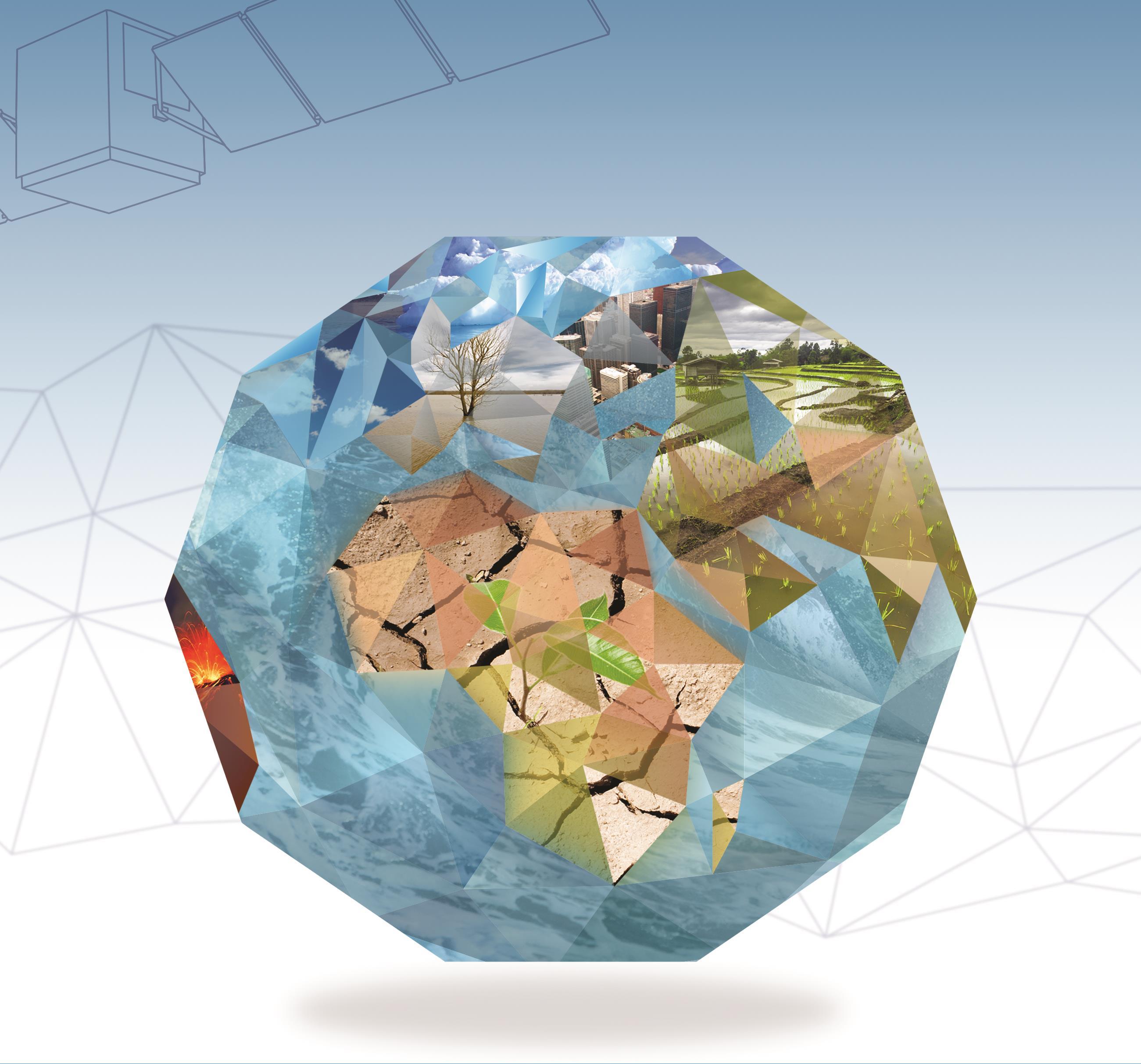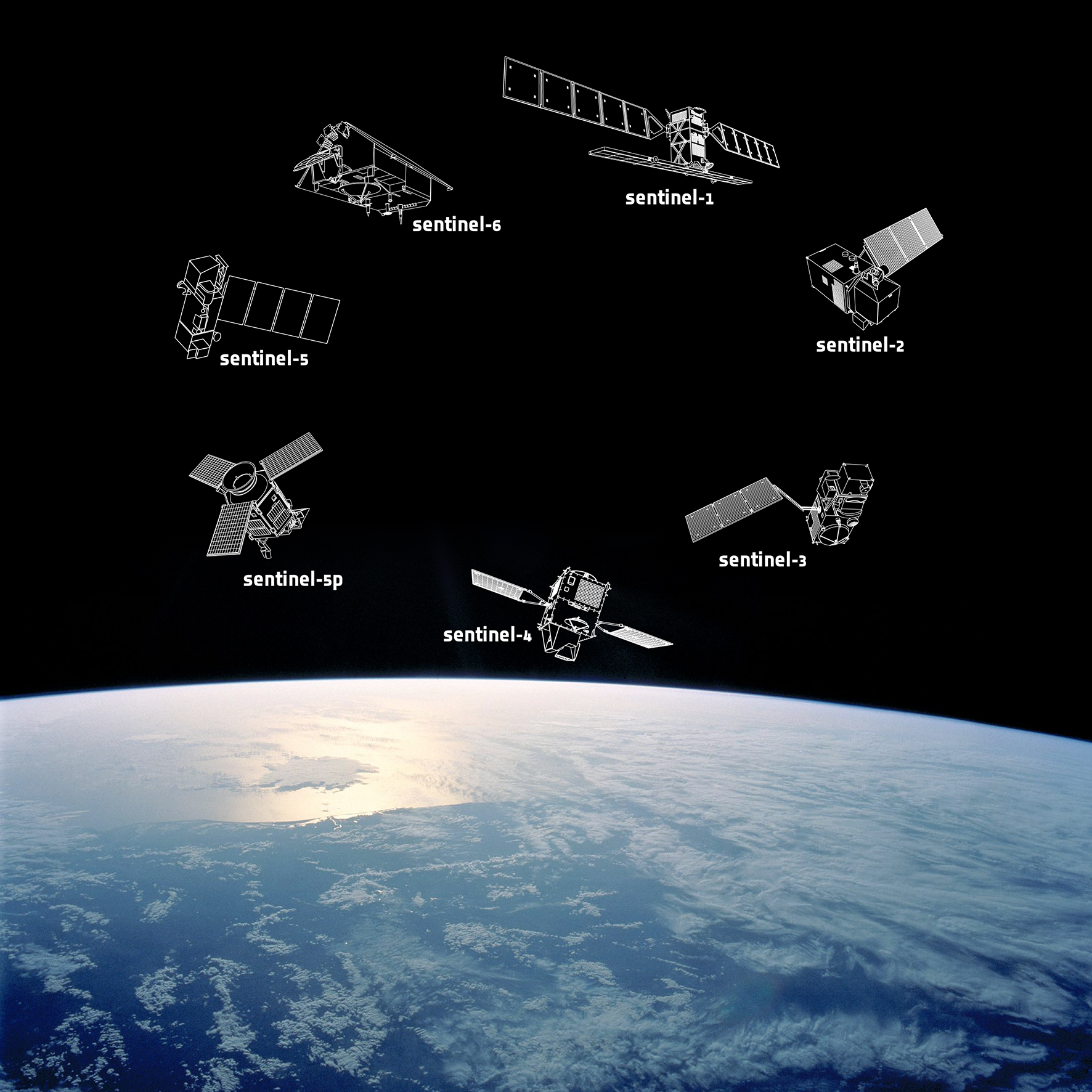The use of space-specific Life Cycle Assessment (LCA) by European stakeholders has expanded widely since the very first internal concurrent design study a decade ago – considering the environmental impacts of designing, manufacturing, launching and operating of a space mission called EcoSat.

The European family of launchers
In 2011, ESA’s Directorate of Launchers called for the environmental impacts of launch vehicles to be investigated, including Europe’s Ariane 5. This launcher study was completed in 2012 and updated in 2014 and considered the life cycle impacts of the exploitation phase including the production & assembly, the launch campaign and the launch event.
Stemming from the success of this study, Ariane 6’s Statement of Work now includes the requirement to perform an LCA of the full launcher system, and to compare it to Ariane 5.

EcoDesigning a space mission
Credits: ESA
Whilst this study is still in its first iteration, preliminary analysis has already begun to highlight potential environmental hotspots. This represents a strong and positive move from ESA’s Directorate of Launchers, and can be seen as a catalyst for other space actors to pursue similar approaches in their own projects.
Future evolution of the launcher would benefit from this study as we are now able to study eco-design options.
Due to this success, LCA is also being applied to many Earth Observation satellites. One example is that of the two competing Earth Explorer 9 concepts FORUM and SKIM, FORUM would measure radiation emitted from Earth across the entire far-infrared part of the electromagnetic spectrum, while SKIM would measure ocean surface currents with a novel multi-beam Doppler-based approach.
Whichever concept succeeds, they will be the first ESA mission to have a full LCA carried out from preliminary design phases. Another example is the Copernicus programme, partly funded by the European Commission and aiming to achieve a global, autonomous, high quality, wide ranging Earth observation capacity. It has been decided that all future Copernicus missions will be designed to take into account their environmental impacts and promote the development of green technologies by implementing LCA from Phase A/B1 of their future generic platform and incentivizing the use of green technologies on board the satellite.

The Sentinel family
These forward-thinking initiatives are testament to the advancement, increasing awareness and growing interest of LCA and eco-design within the European space sector in recent years.





Discussion: one comment
All objects launched into Earth orbit must be built to facilitate rendezvous, capture, and disposal operations.
“Only by chance do we have the luxury of time.”